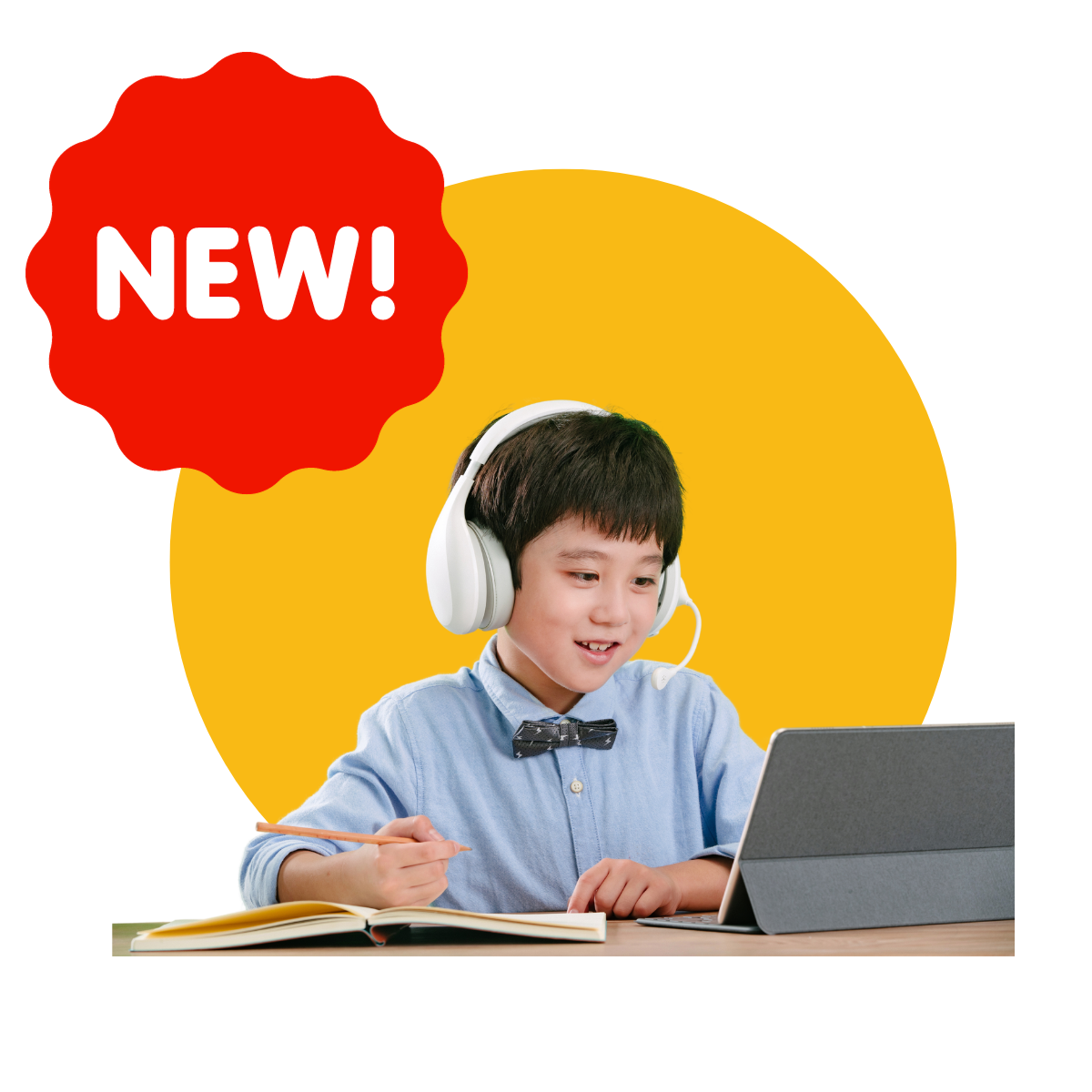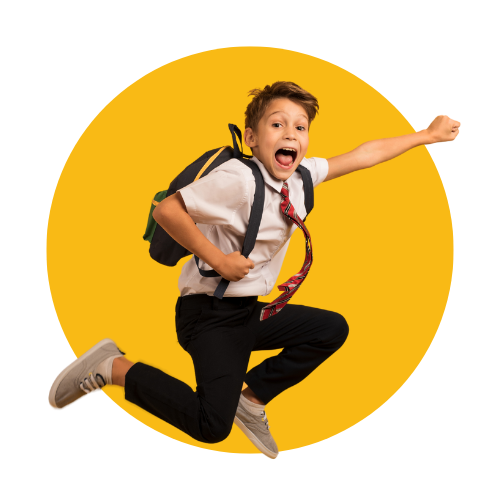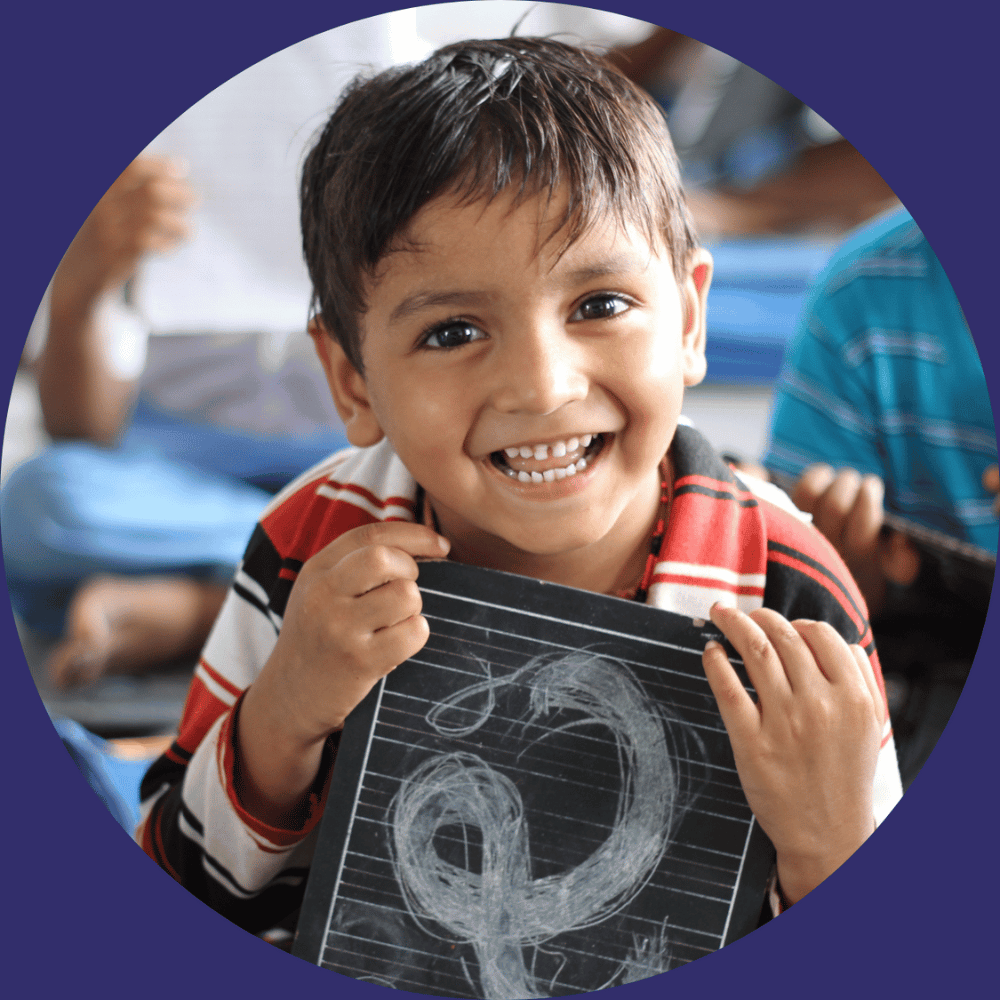Autism spectrum disorder (ASD) is described as a neurodevelopmental condition that leads to impaired social communication skills, repetitive behavioral patterns, and obsessive areas of interests. ASD is usually diagnosed as early as 2 years of age but many children grow well into adulthood without having being officially diagnosed.
Early diagnosis and timely intervention can significantly help manage autism in children. Occupational Therapy can play a great part in achieving this outcome.
What Is Occupational Therapy?
Occupational Therapy is a holistic therapy which treats children who may be healing from injuries, disabilities, and other developmental disorders like Autism. Typically, Occupational Therapists work towards development, recovery, and maintenance of the child’s ability to carry out daily activities and social interaction.
Occupational Therapy begins with the therapist sitting down with the child and their parents to be able to better understand their needs. This is followed by a thorough assessment of the child’s emotional, sensory, and cognitive needs to help develop achievable goals through a comprehensible treatment plan. The Occupational Therapist then works one-on-one with the child to ensure consistent progress.
Occupational Therapy and ASD
Occupational Therapists monitor children with autism and aim to improve their ability to regulate their emotions so they can be part of social interactions, seamlessly. Occupational Therapists evaluate the following skills to determine whether a child is on the Autism spectrum.
- Social interaction: Interaction between peers.
- Communication: Non-verbal communication like body language.
- Cognitive: stamina, attention span.
- Sensory: response to stimuli and sensory defensiveness.
- Motor: Balance, posture, handling of small objects.
Once the Occupational Therapist has assessed the requirements of the child, they design a customized therapy plan to ensure the child can improve in areas they need the most. This helps the child to manage symptoms and grow in a safe and understanding environment that promotes their need to thrive.
To understand ADHD and its impact on an individual, it is important to understand what it entails.
Attention-Deficit/Hyperactivity Disorder (ADHD) is a neurodevelopmental disorder that affects a person’s ability to focus, pay attention, and control their impulsivity and hyperactivity. It is one of the most common childhood disorders and can continue through adolescence and adulthood.
Children with ADHD may have difficulty paying attention, following through on tasks, and controlling impulsive behaviour. They may also be hyperactive and have difficulty sitting still. These symptoms can make it challenging for them to succeed in school and in social situations.
The impact of ADHD on a child’s development and daily functioning can vary depending on the severity of the symptoms. Often, children with ADHD may have difficulty completing homework, following through on tasks, and staying organized. They may also have difficulty with time management and struggle to meet deadlines. They may have difficulty understanding social cues and end up interrupting others or have difficulty waiting their turn.
It is important to note that children with ADHD have unique strengths and abilities just like any other child. Some children with ADHD are often known to be creative, spontaneous and have a strong sense of humour.
To support a child with ADHD, parents, caregivers, and educators should work closely with a qualified professional, such as a paediatrician, a psychiatrist, or a psychologist, to develop a treatment plan that addresses the child’s unique needs. This can include medication, therapy, and behaviour management strategies.
It is also important for parents, caregivers, and educators to understand that children with ADHD are not lesser or less capable than their peers. With the right support and accommodations, children with ADHD can succeed in school and in life.
In conclusion, understanding the specific diagnosis of ADHD in a child and its impact on their development and daily functioning is essential for parents, caregivers, and educators. It is important to remember that every child is unique and that ADHD does not define a child’s abilities or potential. With the right support, children with ADHD can succeed and reach their full potential.
Anger management is the art of learning how to identify triggers that make you angry, identify signs that you are becoming angry, and steps you can take to manage the anger.
Identifying triggers can be especially hard for adults, leave alone children and that to ones with special needs. It is a process that requires a lot of self-awareness and introspection. Identifying signs that one is becoming angry and managing anger are much easier and more teachable. So as parents, we recommend you focus on those till they reach a certain level of maturity.
Identify when your child gets angry
Angry children might demonstrate many different behaviors. Some of the common ones are listed below:
- Fidgety and uneasiness
- Clenching their jaws or grinding their teeth
- Headaches
- Loss in appetite
- Sweating, shaking or trembling
Understanding what you are feeling is one of the first steps to managing emotions in general and the same applies to anger. This allows the individual to identify the feeling and accordingly use an appropriate strategy.
Reinforce support and affection.
One thing you could do is to change the setting. Take them to a different room in the house or maybe outside, amidst nature. Physical touch calms a child so does deep breathing. Try and distract them from what is happening and get them to focus on something else. Ask them to tell you what they see around, play their favorite song, or give them their comfort toy.
Allow your child to express their feelings, freely.
Sharing your feelings is one of the best ways to get rid of negative feelings, especially anger. Lead by example, do this with your child when you are angry, tell them how you feel and why you feel that way. This gives children the confidence to do the same and not be afraid. Be receptive and let the child express freely and without any interruptions. Encourage your children to express their thoughts and feelings through art. It is a wonderful medium to express yourself. Playing an instrument, singing, drawing, craft, painting, etc. are ways to channelize your emotions into something creative and productive.
Appreciate their positive efforts and reward with motivation.
Appreciation from a parent is one of the best feelings in the world for a child. Think of a time when you were a kid and your parents appreciated you or said something nice to you. Apart from the feel-good factor, it is an excellent way to reinforce positive behaviors. It does not have to be something dramatic or expensive, a few words of appreciation will do the trick just fine.
E-X-E-R-C-I-S-E!
Physical activity and exercise serve as an excellent outlet for emotional charge and helps calm the mind. Playing a sport or running or anything which involves breaking a sweat is an excellent way to start your day. To know more about how physical activity also helps anxiety click here.
Talk to an expert
If you feel the intensity and frequency of your child’s anger outbursts are getting worse despite trying multiple things, seeking professional help could be a good option. There are multiple forms of therapy such as PCIT (Parent-child interaction therapy), CBT (Cognitive Behaviour Therapy) which help with anger management, CPS (Collaborative and Proactive Solutions), etc. which can be helpful. Do not be weighed down by the stigma associated with seeking professional help, there is nothing wrong with it.
It can be difficult for parents to learn how to handle children with anger management issues, but sustained time and effort will make a difference eventually. Being consistent, calm, and confident will go a long way in helping your child deal with anger effectively.
A hyperactive child finds it difficult to be in one place, has a tendency to fiddle with things, and may exhibit aggressive behaviour at times. These children are generally restless and it can be challenging to handle them. Commonly known causes of hyperactivity are
-
- Attention Deficit Hyperactivity Disorder (ADHD)
-
- Brain conditions
-
- Psychological problems
-
- Nervous system issues
Take a ADHD assessment for your child – Book Now
Environmental factors affect hyperactivity
A messy room or a cluttered environment can reinforce hyperactivity in your child. Major changes can also affect a child who is prone to hyperactivity.
Hyperactivity and your child’s diet
Diet is a very important factor; however, we should mention that the “sugar-rush” phenomenon is a myth. In fact, studies have shown that the decreased consumption of sugar and related substances produces no viable effect on the hyperactivity of children.
Signs of hyperactivity
-
- Fidgeting
-
- Restlessness
-
- Boredom
-
- Unable to sit calmly in one place for a long time
-
- Impatient
-
- Excessively talkative
-
- Highly impulsive
-
- Interrupting talks
How to engage a hyperactive child
Here are some points for you to think over
-
- Go for a walk with your children, this will help them relax and watch things around & appreciate nature
-
- Make your child sit mindfully for five minutes every day and increase that gradually
-
- Sports are a great way to divert your child’s energy, it brings focus and structure to your child’s life
-
- Remove artificial substances and preservatives from your child’s diet, eating the right food, will remove any additional chances of hyperactivity
Use positive reinforcement when they do a task well. Routines are extremely important as they learn to lead a disciplined life.
Different ways to parent a hyperactive child
You can utilize your child’s energy by engaging them in physical activities, games, and sports. Talk to your child in very simple words and allow them to release their feelings in a heart-to-heart conversation. Teach your children deep breathing to relax and reward them for examples of good behavior, such as obedience or following a routine.
Activities for a hyperactive child
-
- Sports
Outdoor sports like football, volleyball, basketball demand high levels of energy and attention which can work wonders for hyperactive children. Additionally, they learn about team spirit, sportsmanship, and competition.
-
- Music
Music is one of those activities that utilizes both sides of the brain and calms the mind at the same time. Music will soothe your children and boost their memory at the same time.
-
- Swimming
Swimming helps children in more ways than one can imagine. It offers continuous activity and calorie- burn.
-
- Theatre
Drama or theatre is very engaging for hyperactive children. It is a demanding hobby in terms of attention, memory recall it also helps children develop confidence and interpersonal skills.
-
- Nature walks
Trekking, hiking, rock climbing, and even rowing are great activities for your child, as they require a lot of energy.
-
- Board games
Chess and Scrabble helps your child concentrate and make him/her sit in one place for a long time which will put their mind to rest.
-
- Pottery
Pottery is another great way to soothe their senses, it calms them down and gets them into a positive flow.
Let your children help you with household chores, such as dusting or vacuuming, they will enjoy it and it will keep them occupied and busy. Children enjoy such activities with their parents and take pride when they do them well. Painting, sewing, model building and woodworking are also great options.
Ways to calm a hyperactive child
-
- Allow them to fidget for a while, it will help them release their energy
-
- Try not to pay too much attention to your children’s tantrums. If they are unmanageable give them healthy snacks to eat, like dry fruits, so that they get occupied and change their focus to
-
- Hug your child, it helps bring down peak hyperactivity at times
-
- Play soothing music to relax your child
-
- Talk to your children in a calm voice or whisper in their ears, they will mirror your actions
Hyperactivity can be easily handled when you are patient, understanding, and compassionate. It may take a lot of energy from you as a parent to divert your child’s attention and energy towards a structure, but the results are often worth it.
One out of ten children are affected by Attention deficit hyperactivity disorder, (ADHD) yet many misconceptions persist. ADHD is defined as a mental health disorder that can cause above-normal levels of hyperactive and impulsive behaviour.
There exist three different types of ADHD:
- Predominantly Inattentive Presentation
- Predominantly Hyperactive-Impulsive Presentation
- Combined Presentation
Because symptoms can change over time, the presentation may change over time as well. The Symptoms of ADHD include: being unable to sit still–especially in calm or quiet surroundings, constantly fidgeting, being unable to concentrate on tasks, excessive physical movement, excessive talking, and interrupting conversations.
ADHD is a brain disorder. It is nearly impossible to overcome the symptoms of ADHD just by trying to concentrate harder or by willing themselves to pay attention. Recent brain imaging studies have revealed that people with ADHD have structurally different brains than people without ADHD. It can be hereditary. Children whose parents have ADHD have a 40% to 60% chance of also having ADHD. Sometimes a child’s diagnosis can be the first clue that a parent may have ADHD.
Research-based therapies can relieve symptoms of ADHD. Some of the most effective therapies are medication, behavior therapy, education training, and ADHD coaching.
Preparing yourself and your child for ADHD treatment and medication can be a tough and strategic task. To address this challenge you can opt for any of the following strategies
- Behaviour management plans for children with ADHD
- Behaviour strategies to help children with ADHD
- Social skills to help children with ADHD
- Strategies to manage energy and tiredness in children with ADHD
- Classroom strategies to help children with ADHD
- ADHD medications
It is crucial to understand that while caring for your child suffering from ADHD, it is also very important to care for yourself. Asking for help and support is a big part of managing your child’s ADHD. Reach out for help from family members and friends. Speak to your child’s teacher about classroom behavior strategies that you can try out at home. You can also contact a support group for parents of children with ADHD. Talking to your child’s health professional about any difficulties you have can be of great assistance.
This is surely a learning process for you and your child, enjoy and cope together.
A lot of people have fears and worries in life. These are natural feelings we all experience time and again. However, for some people, these fears and worries dictate how they live life. They govern their choices which influences their behaviour. Anxiety is the inability to deal with a fear or worry about something in the future. Ironically, most of these negative impressions are formed in a child’s formative years. Anxiety can be debilitating and can often lead to depression.
Anxiety in children
There are several ways in which anxiety manifests in children and different children respond differently. Some commonly observed symptoms are:
- Disturbed sleep
- Inability to focus, avoiding tests or procrastination.
- Panic Attacks
- Profuse sweating, restlessness, and palpitations
- An upset stomach, headaches
- Being extremely needy
- Avoiding social settings
What causes Anxiety?
Now that we have understood what anxiety is and what it looks like, let us spend some time understanding what causes anxiety.
- Some children are just born with a low threshold to deal with negative emotions and are extra sensitive to stimuli around them.
- At times children learn anxious behaviours from people around them. “Children see, children do.”
- Anxiety can be caused by certain stressful or traumatic events in life:
- High expectations from parents
- Being bullied in school
- Experiencing physical or verbal abuse or being neglected at home.
- Being beat up for scoring fewer marks / failing a test or exam
- Frequently moving houses
- Death of a close family member or friend
- Being involved in a serious accident
- Not being able to do things quickly or as effectively as other children. (Especially in children with learning disabilities)
Children with learning disabilities or ADHD are more likely to feel anxious than others. So much of the working memory of these children is spent on making sense of what is happening around them or occupied with irrelevant noise and distractions that it becomes hard for them to self-regulate and problem solve.
Tips to handle anxiety.
Anxiety is not like an infection that can be cured with antibiotics. Anxiety is more like a common cold; it comes with time to time and again. One cannot cure it with medication but simply manage it as best as possible while it lasts. Often parents want to cure their children of anxiety but sadly that is not how it works.
There are a few things that are critical to an understanding before you can try and manage your child’s anxiety:
- Anxiety is usually triggered by a certain thought, feeling or event; it can be different things for different people.
- Anxiety is usually about something in the future.
- Anxiety releases two hormones in our body: Cortisol and adrenaline. Cortisol is the stress hormone and adrenaline triggers the fight or flight response in the body.
Handling anxiety – General strategies
The key to manage anxiety is doing these three things:
- Bring the child back to the present moment
- Trigger the parasympathetic nervous system in the body
- Exercise and physical activity
Bring the child back to the “here and now” (present moment).
When anxiety sets in, our thoughts are predominantly about the future. Get your child to come back to the here and now by doing this simple “location exercise”.
Ask them to describe what they see around them. For example – “The table is on my right, there is a fan above me, I’m sitting on the floor so on and so forth.” This ensures the future thinking stops and the child comes back to the “here and now”.
Trigger the parasympathetic nervous system in the body.
The parasympathetic nervous system undoes the work of the sympathetic nervous system which gets triggered by anxiety or stress. A simple thing one can do to activate the parasympathetic nervous system is deep breathing: an underrated yet extremely effective way to manage anxiety.
Exercise
Any kind of intense physical activity releases endorphins and dopamine which are the happy hormones and automatically reduces cortisol levels in the bloodstream.
Handling anxiety in children under ten
Other than the strategies touched above, the below two strategies work well for younger children.
Physical touch
Physical touch from a parent offers the child immense comfort and much-needed oxytocin, again a feel-good hormone. Hugging your child, applying pressure on them with blankets also works great. It releases the anxiety and gives relief to their mind.
Divert their attention
Keep picture books, colouring books or toys around for them to immediately divert their attention.
Handling anxiety – children with Autism
Quiet time
Quiet time in the morning is a great way to start the day. Looking out of the window or balcony and just being.
Self-management
You can teach them self-management strategies to cope with sudden situations. E.g. Deep breathing, the “location exercise” or meditation
Comfort toy
Have a comfort toy around your child? It gives them certainty and comfort.
Try establishing an emotional bond with your child, allow them to express their thoughts and feelings freely, be gentle with them when they make mistakes and be patient.
Use of self-care and work and play activities to promote and maintain health, prevent disability, increase independent function, and enhance development. This is how Occupational Therapy plays an important role in helping children with a range of common childhood disorders – particularly – Autism, ADHD, anxiety disorders, and issues related to the three-Rs of learning: Dyslexia, Dysgraphia, and Dyscalculia.
Areas of development for children with special needs
When it comes to children with special needs, Occupational Therapists (including their online counterparts) utilize fun activities such as board games, swings, slides, and other appropriate obstacle courses in order to help them practice several of the skills listed below. Learning these activities results in the gradual rewiring of their brains.
Sensory circuits
“Sensory circuits are a series of activities designed specifically to wake up all the senses,” writes Occupational Therapist Corinna Laurie for Autism.org.uk, adding that it’s “a great way to energize or settle children into the day.” It’s how a Paediatric Occupational Therapist will usually start the day with a child, typically consisting of some sensory-motor task that helps bring them to a state that’s conducive to learning. Through-out any session, the following kinds of sensory circuits are performed:
-
- Activities that are found to be calming, such as lifting weights, wall pushing and other similar muscle-intensive activities. These activities help in increasing the child’s ability to regulate their own sensory inputs, in addition to enhancing their awareness of space.
-
- Activities that are found to be alerting, such as rope-skipping, basketball bouncing, star jumps, spinning and many others. These activities help stimulate the child’s Central Nervous System (CNS), thus preparing them for learning later on in the day.
-
- Activities deemed as being organising activities, such as wobble-board walking and juggling. These activities help the child’s brain and body to work together.
Importance of Assessments
As you may have gathered from the write-up thus far, Occupational Therapy focuses not so much on helping children with special needs learn, but on getting these children in a zone where they are more likely to learn. This is why Occupational Therapy Assessments are so important. These assessments, like the ones provided by us over here at SpEd@home, take stock of the child’s core strengths in order to help in designing customized education plans that can aid in their holistic development as opposed to simply improving academic performances. Typically, such assessments consist of:
-
- An overall profile that summarises their issues from an academic, cognitive, emotional, behavioural and developmental standpoint.
-
- A remedial report that provides a clear understanding of their strengths and weaknesses in areas such as literacy (spelling, grammar, reading fluency etc.) and numeracy (data handling, geometry, algebra etc.)
-
- An Occupational Therapy Report, that covers the following common issues:
-
- Social skills
-
- Cognition
-
- Performance during daily activities
-
- Fine and gross motor skills
-
- Sensory skills
-
- Perception skills
-
- An Occupational Therapy Report, that covers the following common issues:
Click here to book an Assessment for your child
Diet and healthy food habits
Speaking of sensory processing skills, we feel it’s necessary for readers interested in the benefits of Occupational Therapy for kids to understand what a sensory diet is. According to Healthline, “A sensory diet is a program of sensory activities kids perform during the day to ensure they’re getting the input their bodies need. An occupational therapist usually designs it.” Similar to how we physically require the right kinds and amounts of nutrients in regular intervals throughout a typical day, a sensory diet does the same for the kinds of activities that our bodies require in order to feel stimulated.
The effects of a sensory diet are both cumulative (long-term) and immediate (short-term). Given that it effectively restructures one’s nervous system, a few important effects of having one are as follows:
-
- It helps increase children’s attention spans and alertness
-
- It helps in limiting undesirable sensory behaviours
-
- It helps children avoid environmental transitions with less stress
Given that Occupational Therapy is a continuous process, parents themselves also need to step in in order to continue the therapy work after their children come back home.
-
- Giving them a big, firm bear hug
-
- Squeezing playdough or putty
-
- Making them carry or organise heavy books
-
- Stretching resistance bands using their hands
-
- Doing chair and wall push-ups
Fine Motor activities
-
- Playing with puzzles
-
- Rolling out snakes with clay or play dough
-
- Picking up coins and putting them in a piggy bank
-
- Shredding paper by tearing them into strips
-
- Playing card games
-
- Making bookmarks or paper-planes
-
- Creating paper-clip chains
-
- Building towers with small blocks
-
- Colouring pictures using small crayons
-
- Popping bubble-wrap sheets
Dyspraxia and Motor Skills
Dyspraxia is characterized by a child’s inability to perform certain motor skills. When a child shows delays in early childhood development milestones like walking or speaking, has a tough time in keeping up with their peers, and is labelled clumsy for dropping, breaking, or bumping into things, it is prudent to have them undergo a developmental disorder assessment.
Unlike their peers, Dyspraxic children find it difficult to master basic skills. While the severity may differ from child to child, the challenges remain similar. According to Occupational Therapist Lindsey Biel, the muscles of a dyspraxic child are fine, the problem arises due to a disconnect between the brain and the body’s ability to follow instructions. This means, Dyspraxic children may have difficulties in gross motor skills that affect their while bodies or fine motor skills which affects their ability to hold or grab things. Other challenges include Perceptual difficulties where the child cannot tell the left from the right, language difficulties which affect their speech, and Organizational difficulties where the child finds it hard to follow instructions or directions. These problems lead to other behavioural issues like lack of self-esteem and social anxiety.
How can Occupational and Physical Therapy help a Dyspraxic child?
Occupational Therapy (OT) and Physical Therapy (PT) are the two most popular ways to treat Dyspraxia in children. OT focuses on motor and fine motor skills which help with everyday tasks. This includes learning how to throw and catch, tying shoe laces, holding a pen or cutlery , and sorting things. PT is focused on the child’s large muscle groups and helps the child develop their physical skills like walking, running, dancing etc.
Many therapists also suggest a combination of OT and PT which is known to be beneficial for children with Dyspraxia. A therapist assesses where the child needs most attention so as to design a plan focused on these areas. For example, a therapist breaks down complex tasks into smaller steps for easy understanding and then takes the child through it themselves. Children with Dyspraxia require a lot of help and attention in the form of visual, physical, and auditory ques to be able to overcome their difficulties. Their treatment plan more often than not comprises of doing the same tasks consistently in different environments. Consistency is key when dealing with Dyspraxia. Hence, it is important to keep the child motivated and on track throughout the process.
If your child has been showing any signs of Dyspraxia, don’t hesitate to book a free assessment us.
Therapy dogs are emotional support animals. Dogs can be trained to provide emotional support especially during vulnerable moments. These dogs live with the patients requiring their support whether it is in their homes or in centers like nursing homes, schools, and hospitals. They are trained to be gentle and friendly at all times and are always on the alert to identify any signs of strain or panic in their human so that they can provide necessary comfort.
Therapy Dogs are not the same as Service Dogs. Service Dogs are trained to perform tasks for their owners and receive activities-oriented training which help their owners to cope with their disabilities. These dogs also serve as companions to their owners when they are in public places.
Therapy Dogs on the other hand, play the role of comfort pets. They support their owner’s mental health and provide them with therapeutic benefits. Their cute antics and unconditional love make them excellent therapy partners. Therapy Dogs can help boost mental and emotional health. They are a chosen way of therapy for many patients diagnosed with several mental issues like Bipolar Disorder, ADHD, PTSD, and Alzheimer’s. It has also been observed that emotional challengers that arise due to physical issues can be better dealt with the help of Therapy Dogs.
Patients recovering from accidents or invasive surgeries are known to deal with pain better too. Dogs like Golden Retrievers, poodles, and Labradors are majorly used as Therapy Dogs. Other breeds like Pomeranians are also considered when the living space isn’t good enough for large dogs.
Therapy Dogs are a great way to ensure emotional support when it comes to mental conditions like severe anxiety too. It is a great way forward for those seeking comfort that is easily available during moments of intense pressures. You can learn about Therapy Dogs and visit local shelters to find one you can train and bring home.
Occupational Therapy for Improving Handwriting
Handwriting, a seemingly simple everyday response is a combination of several aspects like complex fine motor movements, visual perception, and comprehension of the language one is writing in. It also involves the control over holding a pen or pencil to produce legible text. Here’s a breakdown of the aspects needed for successful handwriting development.
Does your child need occupational therapy? Click here to Book an Assessment!
Motor Skill: To create legible writing, it is important to be able to control mind-muscle movement of the hands, fingers, forearm, and shoulder.
Comprehension: A child must be able to identify, understand, and recall alphabets to make them into words. They should also have the ability to understand how to form and space letters on the page in perfect alignment.
Perceptual skill: A child must be able to differentiate and understand the lines on the page and be able to create readable text.
Good handwriting is more than a flex. It is one of the various ways through which children display their cognitive ability. It enables both teachers and parents to ensure that the child is learning fine. A child facing handwriting struggles may have trouble keeping up with the rest of the class. While poor handwriting is not the sole identification of a child’s abilities, it does create obstacles in the way.
Handwriting can be improved through Occupational Therapy. Occupational Therapists analyze and identify the aspects where your child maybe having difficulties with their handwriting. As with all developmental struggles, it is prudent to address handwriting difficulties in time. Precise treatments specifically designed to improve handwriting are proven to benefit children as they are likely to be able to re-wire their minds better than if treated as adults.
What are some handwriting problems that should make you consider Occupational Therapy for your child?
- Poor fine motor skills
- Poor legibility of written text
- Struggles with shapes
- Struggles with alignment
- Backward formed letters
Occupational Therapy allows your child to learn their way around handwriting through sensory inputs, activities, and customized writing programs. If you are looking for the right therapist to help resolve your child’s handwriting issues, head to Sped@Home- a place where every child is enabled, anywhere.









